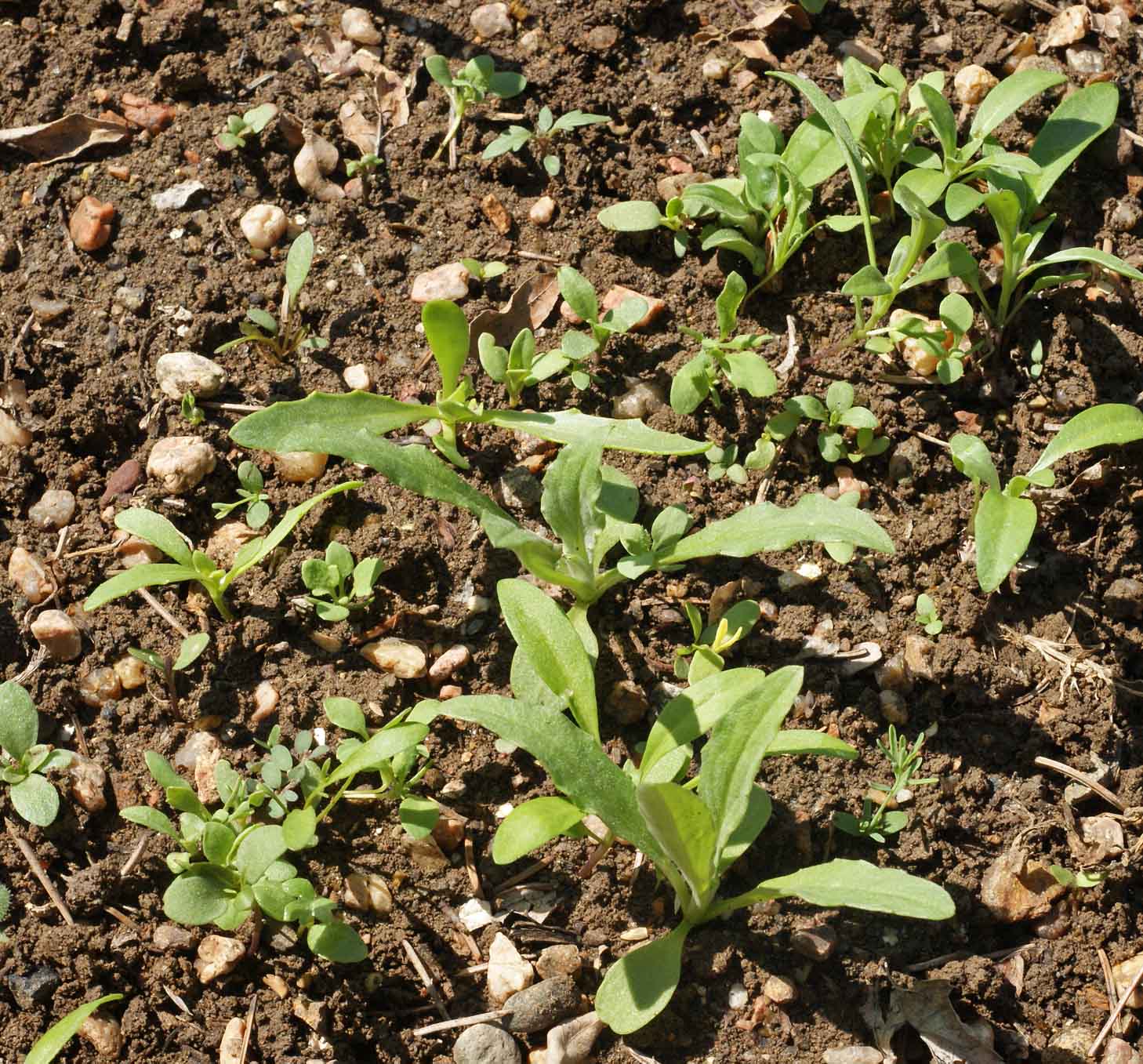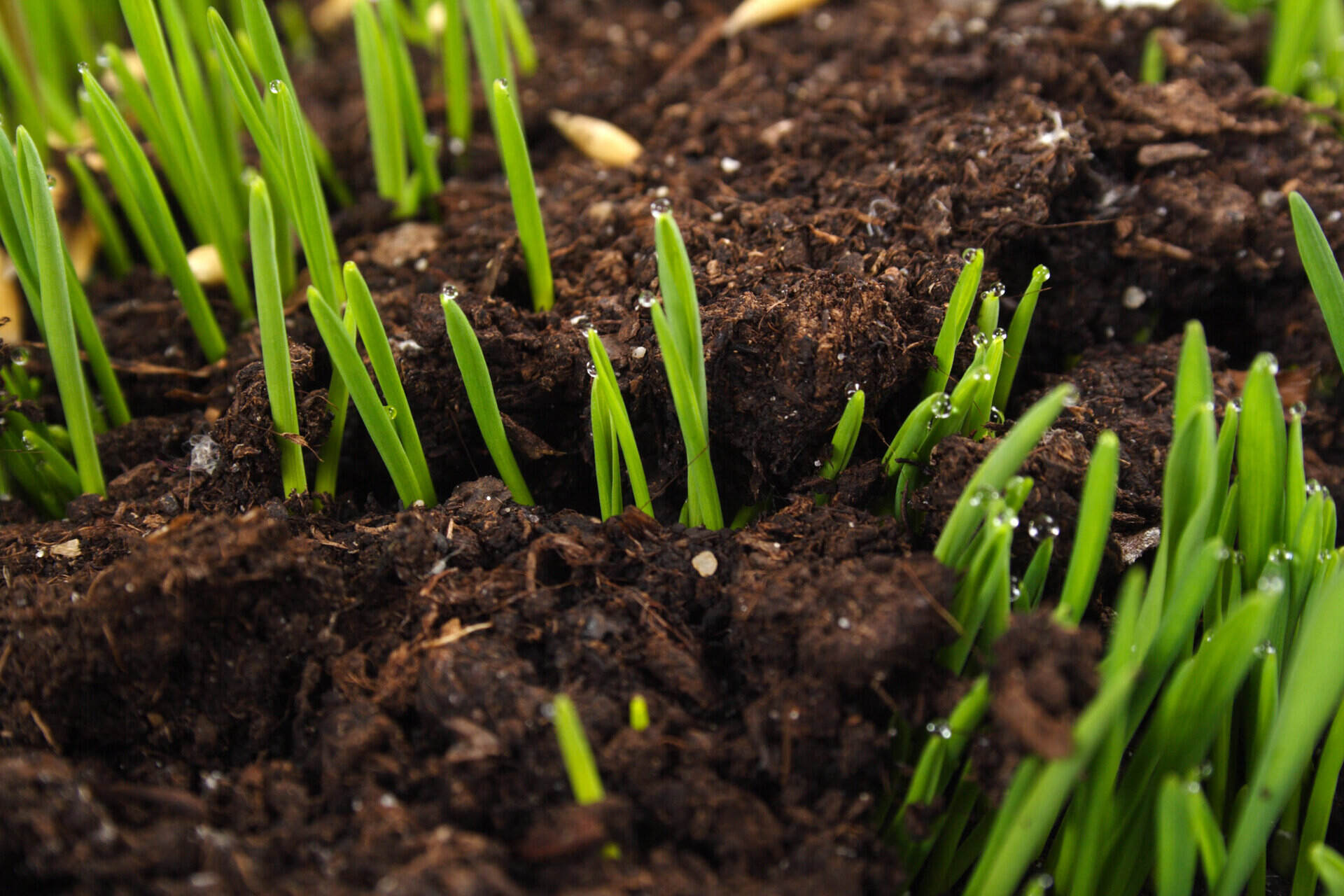Home>Gardening & Outdoor>Plant Care & Gardening Tips>What Temperatures Do Wildflower Seeds Need To Germinate


Plant Care & Gardening Tips
What Temperatures Do Wildflower Seeds Need To Germinate
Modified: March 24, 2024
Learn the ideal germination temperatures for wildflower seeds and get expert plant care and gardening tips for successful seed starting. Discover how to create the perfect conditions for your wildflower garden.
(Many of the links in this article redirect to a specific reviewed product. Your purchase of these products through affiliate links helps to generate commission for Storables.com, at no extra cost. Learn more)
**
Introduction
**
Wildflowers are a delightful addition to any garden, with their vibrant colors and natural charm. Cultivating these beautiful blooms from seeds can be a rewarding and environmentally friendly endeavor. However, successful germination of wildflower seeds relies on various factors, with temperature playing a crucial role in the process. Understanding the optimal germination temperatures for different wildflower species is essential for achieving successful results.
In this comprehensive guide, we will explore the intricate relationship between temperature and wildflower seed germination. By delving into the factors that influence germination, identifying the optimal temperature ranges for various wildflower species, and providing practical tips for successful seed germination, you will gain valuable insights to elevate your gardening endeavors. Let's embark on this enlightening journey to uncover the secrets of wildflower seed germination temperatures.
Key Takeaways:
- Understanding the ideal temperatures for wildflower seeds helps gardeners create the perfect environment for successful germination, from warm-season blooms to cool-season flowers.
- Researching species-specific requirements, utilizing temperature-controlled environments, and practicing moisture management are essential for maximizing the likelihood of successful wildflower seed germination.
Factors Affecting Wildflower Seed Germination
Wildflower seed germination is a complex process influenced by several factors, each playing a pivotal role in the successful emergence of new plant life. Understanding these factors is crucial for creating optimal conditions to support the germination of wildflower seeds. Let’s explore the key elements that affect wildflower seed germination:
Soil Moisture: Adequate soil moisture is essential for wildflower seed germination. The moisture level directly impacts the seed's ability to imbibe water, initiating the germination process. However, excessive moisture can lead to rotting or fungal issues, emphasizing the importance of balanced soil moisture.
Soil pH: The pH level of the soil can significantly impact seed germination. Different wildflower species thrive in varying pH ranges, and ensuring the soil pH aligns with the specific requirements of the seeds is crucial for successful germination.
Soil Texture: The texture of the soil influences a seed's ability to establish root systems and access essential nutrients. Soil with a balanced texture facilitates proper aeration and water retention, creating an optimal environment for seed germination.
Light Exposure: While some wildflower seeds require exposure to light for germination, others thrive in darkness. Understanding the light preferences of specific wildflower species is essential for providing suitable germination conditions.
Temperature: Temperature plays a critical role in wildflower seed germination. Each wildflower species has an optimal temperature range for germination, and deviations from these ranges can significantly impact the success of seed germination.
Seed Viability: The viability of wildflower seeds, influenced by factors such as age and storage conditions, directly affects their germination potential. Using fresh, high-quality seeds increases the likelihood of successful germination.
Seed Depth: Planting wildflower seeds at the appropriate depth in the soil is crucial for ensuring they receive the necessary environmental cues for germination. Different species have varying seed depth requirements, and following these guidelines is essential for optimal results.
Understanding and addressing these factors is vital for creating an environment conducive to wildflower seed germination. By carefully considering these elements, gardeners can maximize the likelihood of successful germination and foster the growth of stunning wildflowers.
Optimal Germination Temperatures for Wildflower Seeds
Temperature plays a pivotal role in the germination of wildflower seeds, influencing the rate and success of seedling emergence. Different wildflower species exhibit varying temperature requirements for optimal germination, reflecting their evolutionary adaptations to specific environmental conditions. Understanding these temperature preferences is crucial for creating the ideal germination environment. Let’s explore the optimal germination temperatures for wildflower seeds:
Warm-Season Wildflowers: Many warm-season wildflowers, such as cosmos (Cosmos bipinnatus) and zinnias (Zinnia elegans), thrive in temperatures ranging from 70°F to 85°F (21°C to 29°C). These species exhibit optimal germination when provided with consistent warmth, mimicking their natural habitat conditions.
Cool-Season Wildflowers: Conversely, cool-season wildflowers, including bachelor’s buttons (Centaurea cyanus) and cornflowers (Centaurea montana), prefer cooler germination temperatures. They thrive in the range of 55°F to 65°F (13°C to 18°C), reflecting their adaptation to cooler climates and seasonal germination patterns.
Temperature Fluctuations: While identifying the optimal germination temperatures for wildflower seeds is crucial, it’s important to note that some species benefit from fluctuating temperatures. Mimicking natural temperature variations through processes like stratification, which involves exposing seeds to alternating cold and warm periods, can enhance germination rates for certain wildflowers.
Adaptation to Climate: Wildflower species have evolved to thrive in specific climatic conditions, and their germination temperature preferences reflect these adaptations. Understanding the native habitats and environmental niches of different wildflowers provides valuable insights into their temperature requirements for successful germination.
Microclimate Considerations: In addition to understanding the optimal germination temperatures for wildflower seeds, gardeners should consider the microclimates within their gardening spaces. Factors such as sun exposure, soil heat retention, and shelter from extreme temperatures can influence the local temperature conditions experienced by germinating seeds.
By aligning the germination environment with the optimal temperature ranges for specific wildflower species, gardeners can enhance the likelihood of successful seedling emergence. This knowledge empowers gardeners to create tailored germination conditions that cater to the unique temperature preferences of diverse wildflower species.
Wildflower seeds generally need soil temperatures between 60-70°F (15-21°C) to germinate. Use a soil thermometer to monitor the temperature before planting.
Germination Temperatures of Specific Wildflower Species
Understanding the germination temperature preferences of specific wildflower species is essential for creating tailored germination conditions that promote successful seedling emergence. Each species has evolved to thrive within particular temperature ranges, reflecting their natural habitats and environmental adaptations. Let’s explore the germination temperatures of select wildflower species to gain insights into their unique temperature preferences:
- Cosmos (Cosmos bipinnatus): Cosmos, beloved for its delicate, daisy-like blooms, favors germination temperatures between 70°F and 85°F (21°C to 29°C). Providing consistent warmth during the germination process is essential for nurturing healthy cosmos seedlings.
- Zinnias (Zinnia elegans): Zinnias, renowned for their vibrant colors and long-lasting blooms, exhibit optimal germination within the temperature range of 70°F to 85°F (21°C to 29°C). Maintaining a warm and stable germination environment supports the successful emergence of zinnia seedlings.
- Bachelor’s Buttons (Centaurea cyanus): Bachelor’s buttons, known for their charming blue blooms, thrive in cooler germination temperatures, typically ranging from 55°F to 65°F (13°C to 18°C). These cool-season wildflowers benefit from the moderate chill of early spring or late fall for optimal germination.
- Cornflowers (Centaurea montana): Cornflowers, adored for their striking blue blossoms, share similar germination temperature preferences with bachelor’s buttons, thriving in cooler temperatures between 55°F and 65°F (13°C to 18°C). Providing a cool germination environment supports the successful establishment of cornflower seedlings.
These examples illustrate the diverse germination temperature preferences of specific wildflower species. By aligning the germination conditions with the unique temperature ranges favored by each species, gardeners can optimize the germination process and cultivate robust, healthy seedlings.
Tips for Successful Wildflower Seed Germination
Cultivating wildflowers from seeds can be a fulfilling and rewarding experience, offering the opportunity to witness the miraculous journey of new plant life. To maximize the likelihood of successful wildflower seed germination, consider the following tips to create an optimal germination environment:
- Research Species-Specific Requirements: Different wildflower species have unique germination preferences. Research the specific temperature, light, and moisture requirements of the wildflower seeds you intend to plant to provide tailored germination conditions.
- Optimal Planting Time: Plant wildflower seeds at the optimal time based on their germination temperature preferences. Warm-season and cool-season wildflowers have distinct planting windows to align with their temperature requirements.
- Temperature-Controlled Environment: Utilize temperature-controlled environments, such as indoor seed starting setups or greenhouse facilities, to maintain consistent and ideal germination temperatures for wildflower seeds.
- Stratification for Cold-Tolerant Species: Some wildflower seeds, particularly those from cold-tolerant species, benefit from stratification, a process involving exposure to cold temperatures to break seed dormancy and enhance germination rates.
- Moisture Management: Balance soil moisture levels to support seed imbibition without creating waterlogged conditions. Adequate moisture is crucial for initiating the germination process while preventing fungal issues caused by excessive wetness.
- Light Considerations: Understand the light preferences of the wildflower seeds. While some species require light for germination, others thrive in darkness. Provide appropriate light conditions based on the specific needs of the seeds.
- Monitoring and Patience: Regularly monitor the germination environment and exercise patience. Wildflower seeds may exhibit varying germination timelines, and consistent monitoring is essential for providing timely interventions if needed.
- Quality Seeds and Soil: Start with high-quality wildflower seeds sourced from reputable suppliers. Additionally, ensure the soil used for germination is well-draining, nutrient-rich, and free from contaminants that may hinder seedling emergence.
- Microclimate Optimization: Consider the microclimates within your gardening space and provide shelter or insulation to protect germinating seeds from extreme temperature fluctuations and environmental stressors.
By implementing these tips, gardeners can enhance the likelihood of successful wildflower seed germination, fostering the growth of vibrant and resilient wildflower blooms that enrich gardens and landscapes with their natural beauty.
Read more: What Temperature Do Sweet Corn Germinate In
Conclusion
Embarking on the journey of wildflower seed germination unveils a world of natural wonder and horticultural delight. By delving into the intricate relationship between temperature and wildflower seed germination, we have gained valuable insights into the diverse temperature preferences of different wildflower species and the factors influencing successful seedling emergence.
Understanding the optimal germination temperatures for wildflower seeds empowers gardeners to create tailored germination environments that cater to the unique needs of each species. From warm-season blooms that thrive in consistent warmth to cool-season wildflowers that prefer moderate chill, the temperature requirements of wildflower seeds reflect their evolutionary adaptations and natural habitats. By aligning the germination conditions with these temperature preferences, gardeners can optimize the germination process and nurture robust, healthy seedlings.
Moreover, considering the broader factors affecting wildflower seed germination, such as soil moisture, pH, texture, light exposure, and seed viability, provides a holistic approach to creating ideal germination environments. By addressing these elements in conjunction with temperature considerations, gardeners can enhance the likelihood of successful seedling emergence and foster the growth of stunning wildflowers.
Implementing practical tips, such as researching species-specific requirements, utilizing temperature-controlled environments, and practicing moisture management, equips gardeners with the knowledge and tools to create optimal germination conditions. Additionally, the consideration of microclimates within gardening spaces and the quality of seeds and soil further contributes to the success of wildflower seed germination.
As we embrace the art and science of wildflower seed germination, we embark on a journey that celebrates the resilience and beauty of nature. By honoring the distinct temperature preferences and environmental adaptations of wildflower species, we cultivate flourishing gardens adorned with vibrant blooms that enrich our lives and ecosystems.
May this exploration of wildflower seed germination temperatures inspire you to embark on your own horticultural adventures, fostering the growth of captivating wildflowers that embody the timeless allure of the natural world.
Frequently Asked Questions about What Temperatures Do Wildflower Seeds Need To Germinate
Was this page helpful?
At Storables.com, we guarantee accurate and reliable information. Our content, validated by Expert Board Contributors, is crafted following stringent Editorial Policies. We're committed to providing you with well-researched, expert-backed insights for all your informational needs.















0 thoughts on “What Temperatures Do Wildflower Seeds Need To Germinate”